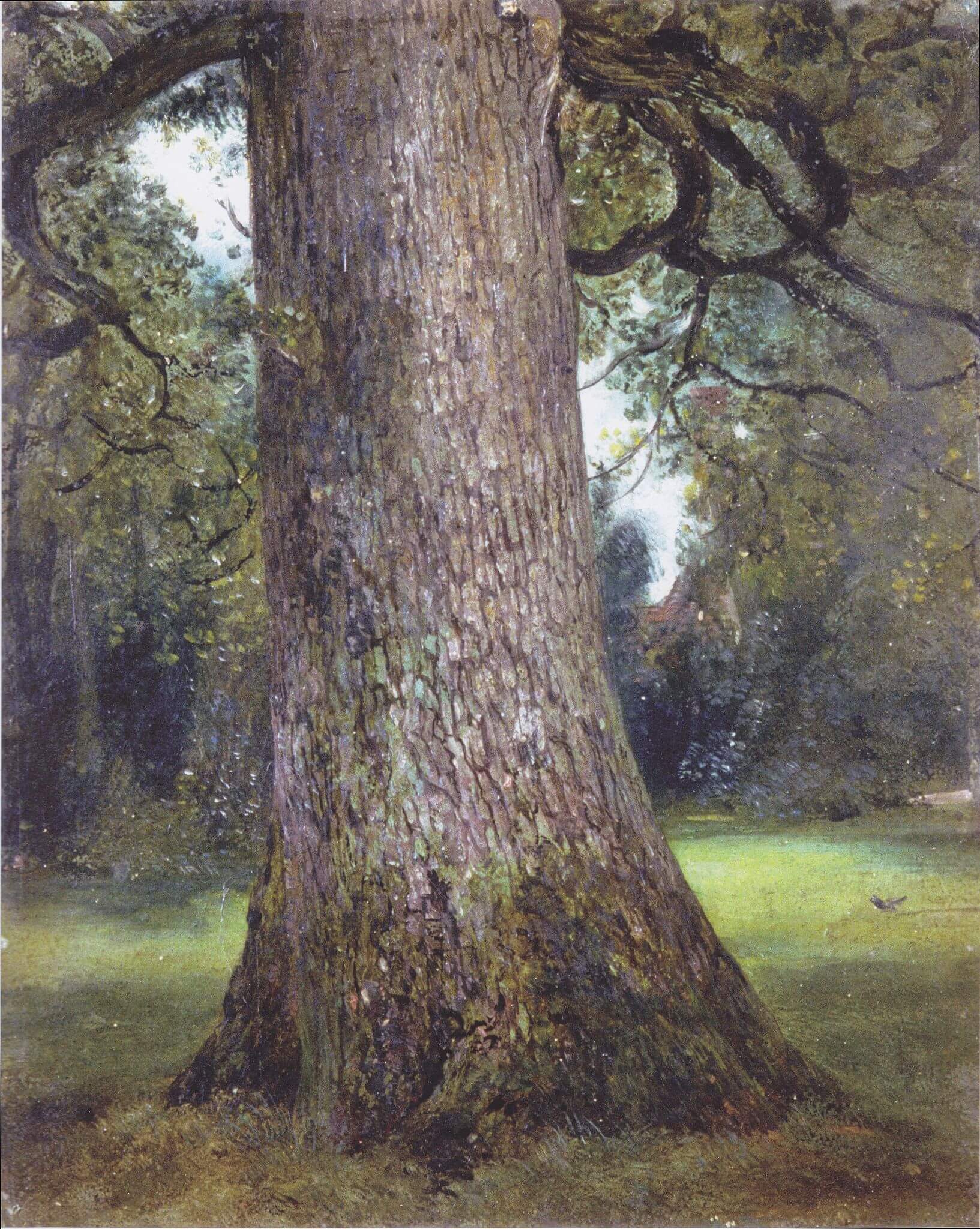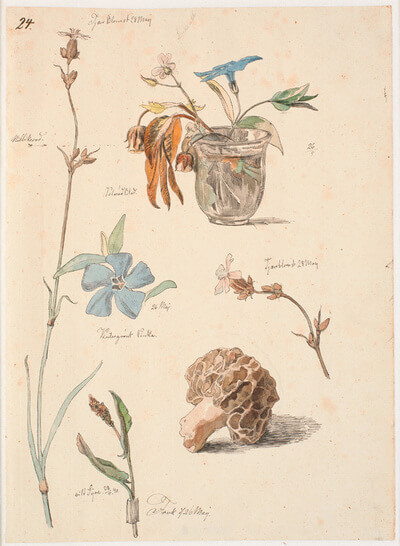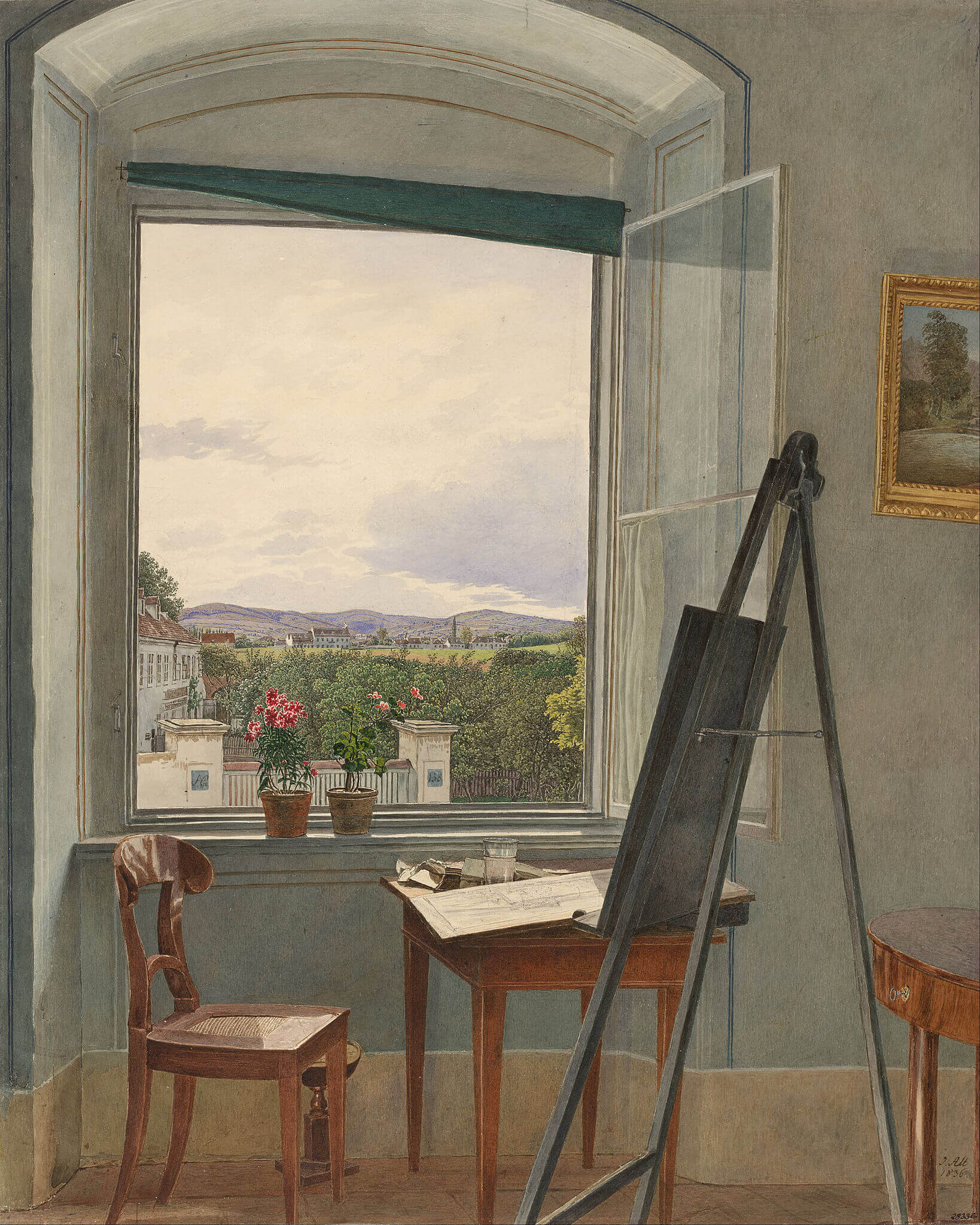Sociability • Social Virtues
The Eyes of Love
In 1821, the 45-year-old English painter John Constable went out on to Hampstead Heath and did something very loving. He set up his easel and looked closely at an elm tree. He observed the weathering across its bark, the lichen around its base, the moss clinging to its roots; he looked at the water stains that ran down its sides, its canopy of toothed celadon-green leaves and its purple-black buds. He spent around forty hours over a few weeks lavishing attention on an object to which most of us have never accorded more than a minute. Commenting on this capacity after his death, Constable’s friend and biographer, C.R. Leslie, remarked: ‘I have seen him admire a fine tree with an ecstasy of delight like that with which he would catch up a beautiful child in his arms’.

Constable’s move feels central to the definition of love because when we consider someone through the eyes of love (it might be a cherubic child or a criminal, a beggar or a derided celebrity), what we are first and foremost doing is studying them closely, solicitously and with benevolence. For once, we are enquiring what might actually be motivating them, what they might have been through and the distinctive forces that have shaped them, as particular as the patterns on bark.
The close studies of painters are touching because we recognise in them a degree of care from which we have been exiled in the ordinary run of life. We unconsciously sense how much we secretly long for steady attention to be brought to bear on the world’s trees and flowers, domestic scenes and vistas, people and ideas. It may have been a very long time – perhaps early childhood – since someone took a proper interest in details about us: sincerely enquired how we are feeling, looked at each of our fingers, caressed the back of our heads or delved into the nuances of what excites and saddens us. We recognise an attitude of consideration in art by which we are nourished and sustained in life.
Through the eyes of love, we are not crushed into a headline, our case is not dismissed with a rapid ironic sneer, and through thoughtful engrossment, we can expand into our true multi-faceted selves. The early-19th-century Danish painter Johan Thomas Lundbye may have been engaged in drawing flowers, but he was at the same time modelling for us how we might behave when someone comes to tell us that they are getting divorced, or when a child has destroyed their room in anger, or when we read about the trial and imprisonment of a stranger in the newspaper. We too might follow Lundbye’s implicit lesson and take the time to scrutinize every particularity; we might care to see to the underside of things; we might note what is beautiful and tender in inauspicious places.

In 1836, the Austrian painter Jakob Alt allowed us a biographical glimpse into his creative life when he drew his studio in a suburb of Vienna, tracing the objects inside as well as the view onto the mountains of Wienerwald and the houses of the village of Dornbach. The result is a depiction of a place of work, but it is also an inadvertent rendition of what it means to love: that is, to look out at the world through the window of our souls with special attention, to open ourselves up to otherness, attempting to give true value to existence, to rescue so-called minor elements from inattention, striving to correct our normal disregard and coldness, and so honouring the true beauty and complexity of things before darkness falls.



























